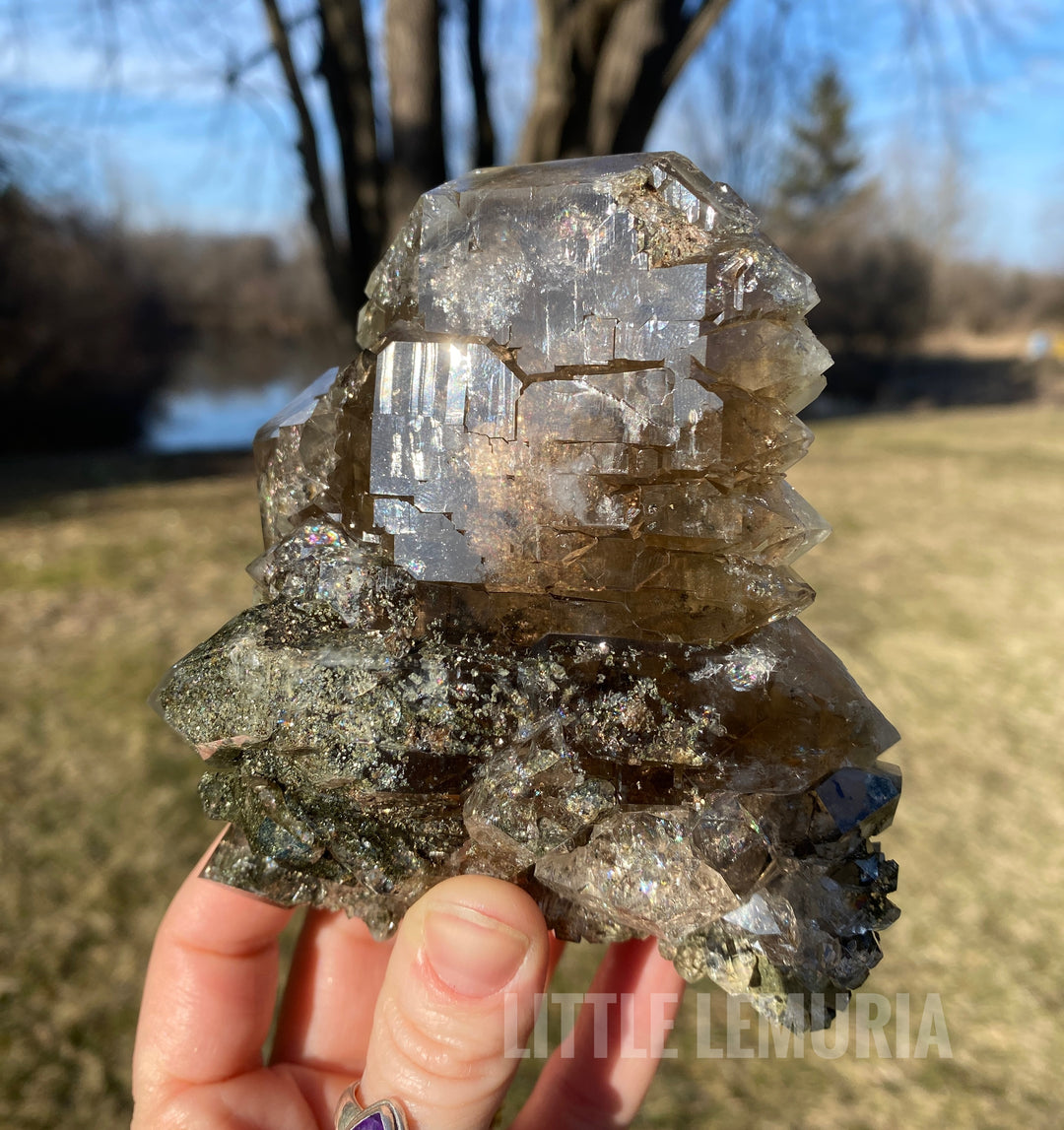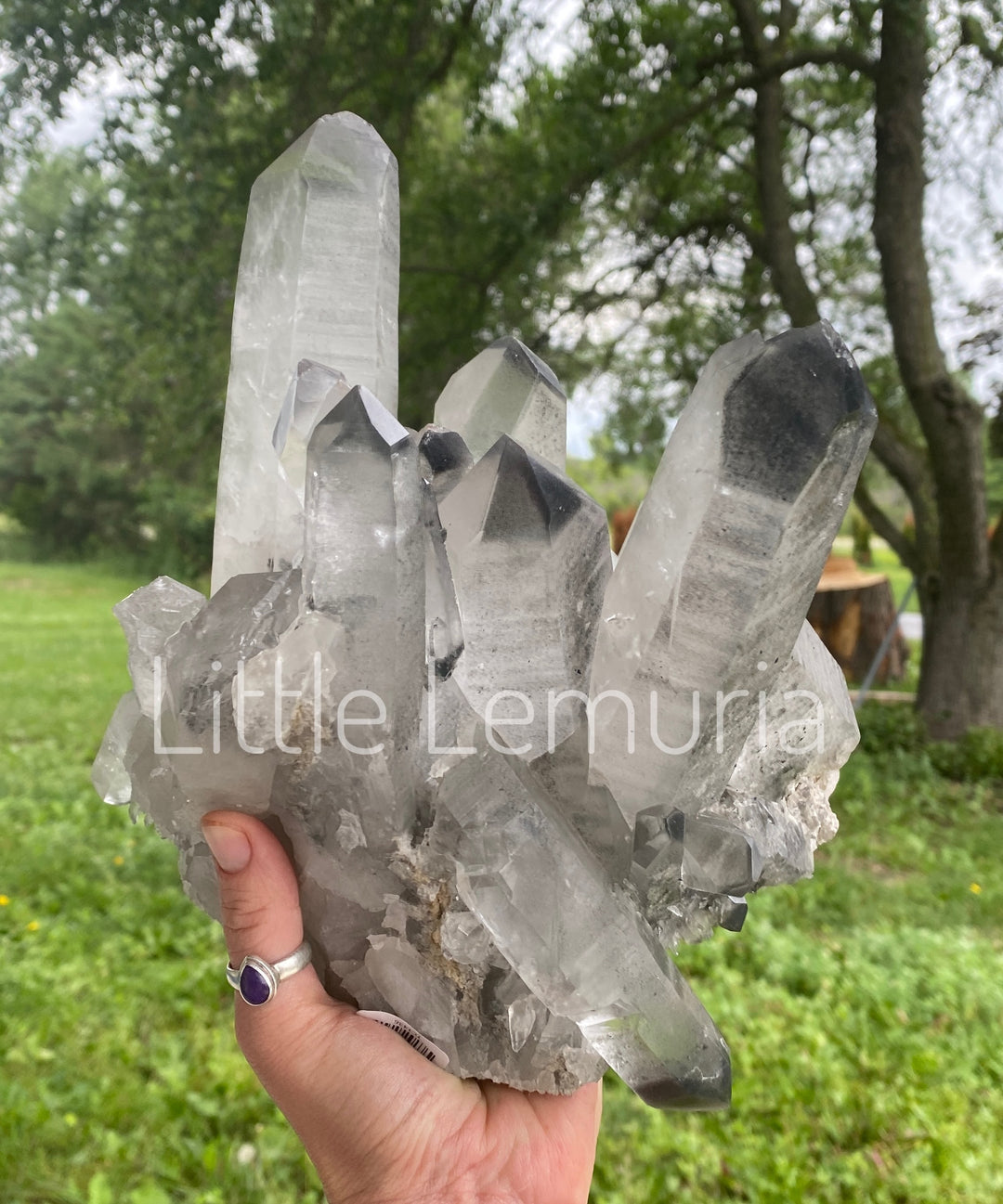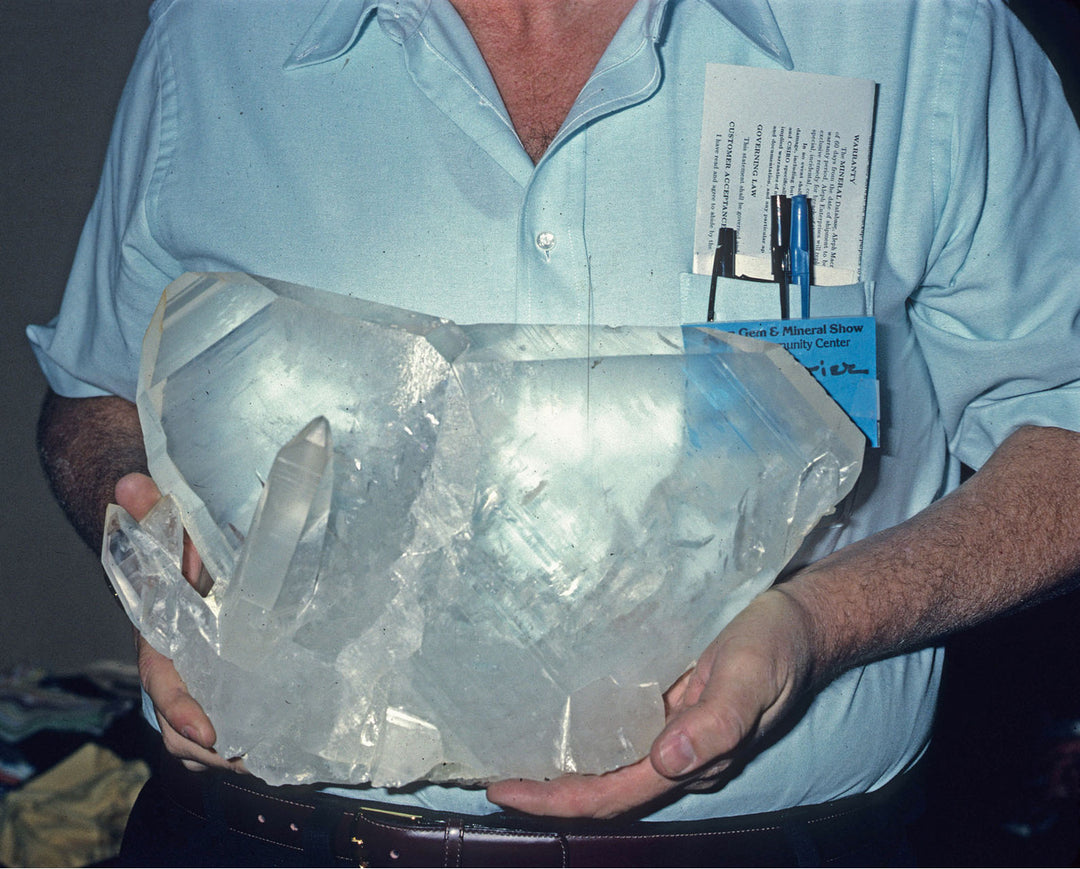The real facts about what minerals can't get wet and how to know the difference.
If you have spent any time floating around the vast crystal community on the net, you have probably stumbled on the hot topic of minerals that cannot be exposed to water. No one seems to tell us exactly what happens, but from what I gather the minerals we seek to cleanse could dissolve or somehow transform into something dangerously toxic if exposed to water. This would obviously be an outcome any collector would want to avoid at all costs! It stands to reason that knowing which minerals could be destroyed or become suddenly toxic is of the utmost importance. Unfortunately, it looks like the research became a little too complicated and people with good intentions over generalized this complex science. Everywhere we clicked we found blogs telling fact seekers that minerals that end in “-ite” should never be exposed to water. That just doesn’t add up.

What crystals can and can't get wet?
We will spare everyone an extensive list of minerals and crystals ending in “-ite”…but as you can imagine this is an egregious assumption considering this suffix is Greek for the word rock or stone and it has absolutely nothing to do with the properties or solubility of the crystal. Take it from a geologist: “Using the suffix of a mineral name like ‘ite’ is NOT a sufficient guide to determining a mineral’s solubility or safety. Do NOT use this technique.”
Everything in the mineral kingdom strives to achieve equilibrium. Water can also be considered a mineral that is liquid at temperatures above 32°F. This is important because even water strives to achieve equilibrium. As a liquid, water should be considered a polar mineral – one with two poles – a positive and a negative. This is especially important when considering whether your crystal or mineral specimen will dissolve or degrade when exposed to water.

Without getting into a great deal of math to explain solubility, we can use some easily demonstrable examples to show that different minerals dissolve at different rates starting with halite vs. quartz. Halite is a salt, and commonly referred to as table salt. You can easily pour water onto salt crystals and watch them dissolve or pour salt crystals into water and watch the same reaction. Now, if you did the same thing with quartz for the same duration of time, you would still have the same piece of quartz you started with. Only microscopic changes, if any, would occur on the surface of the quartz.

The ability of water to interact with a mineral not only depends on the mineral’s chemistry but it also depends on the temperature of the water and mineral. Additionally, any expected reaction hinges on the existing chemistry of the water. Many of us do not use deionized water at ‘room temperature’ (68°F), at least not regularly, so the pre-existing elements like sodium, copper, lead, chlorine, etc. can impact how the water reacts with the mineral or crystal specimen. The easiest indicator of how water will react is pH. A pH lower than 7 is an acidic water solution, and a pH above 7 is a basic water solution.
Water in Florida (higher pH), for example, will react with a crystal or mineral differently than water from Maine (lower pH). This is simply because the material the water encounters is different, and the groundwater temperatures are different. It can become exceedingly complicated. Furthermore, water in the air is a factor to consider. A crystal in the deserts of Arizona will react differently than a crystal stored in the bayous of Louisiana. This factor is called relative humidity and has to do with the amount of water held in the air.

Whether you are interested in cleaning your crystal or mineral; storing your crystal; immersing your crystal in a fountain, drinking water, or bath; or other activity involving water, it takes a little research to understand how your intended use will react with water. Some simple questions to ask are:
- Do I live in an area that is humid or dry?
- Am I storing my mineral / crystal in an area that is humid or dry?
- What is the pH of my water source? Is it acidic or basic?
- How will my mineral / crystal react with a weak acid or base?
- How will my mineral / crystal react to repeated exposure to humid (or dry) air?
Unfortunately, simply researching a mineral through a traditional search engine without some understanding of what you are looking for, just isn’t enough. However, mindat.org is a helpful resource and provides an extensive list of over 600 minerals and their solubility in water. The link is as follows: https://www.mindat.org/article.php/553/Solubilty+Data+on+646+Common+and+Not+So+Common+Minerals

This link will take you to a table with minerals listed alphabetically and includes their solubility in water and other solutions. The first column in the table is water – that is the only column you need to pay attention to. HOWEVER, I emphasize the need to use caution!!! Minerals containing lead (Pb), Arsenic (As), and other potentially harmful elements should be treated with caution. Even traces of some of these minerals dissolving in water can be extremely harmful!!
How do you know? Understand your mineral’s / crystal’s chemical formula. Each element in the periodic table is listed for each mineral / crystal. To identify each chemical element, look at each upper-case letter. Some Upper-Case letters may be followed by a lower-case letter. Look up each of these sets in your specimen, and if you are unsure, seek advice from a professional or avoid using water altogether.

Water soluble crystals
Let’s circle back to minerals or crystals ending in ‘ite’… Of the 646 crystals and mineral solubilities referenced by mindat.org, only 53 were soluble. Of these 53 soluble (or slightly soluble) minerals, 8 of them did NOT end in ‘ite’. Similarly, of the 646 minerals listed by mindat.org, 593 are listed as insoluble. Of these 593, 505 were NOT water soluble, but also ended ‘ite’. Once again, using the suffix of a mineral name like ‘ite’ is NOT a sufficient guide to determining a mineral’s solubility or safety. Do NOT use this technique.
Another important note when examining mineral solubility, and the table provided by mindat.org, is pH. Laboratory analysis of solubility tends to utilize ion-free water at a pH of 7. Any variation in pH above or below 7 changes the way water will react with a mineral. When washing crystals, seek the best approach to minimizing any impacts associated with slightly acidic or basic tap water. Ideally, use deionized water. Washing with distilled water is considered a second-best approach.

The long and short of it is this: the way minerals and crystals react with water is part of the dynamics of nature – many variables striving to achieve equilibrium. It depends on the crystal or mineral, the air, the water chemistry, the temperature of the mineral and the water, and more. It is a complex system with no easy answer. Mindat.org has done a magnificent job listing over 600 different minerals and their solubility or insolubility in water. If there is a mineral that you are unsure of, let us know. We will do our best to help.
Now…as if we haven’t already made your head spin, just because a mineral is soluble in water, does not mean it will completely dissolve with the very touch water like our salt crystals (NaCl) in fresh water example above. Solubility simply means the mineral or crystal will react with water. It does not determine how fast. Therein lies the problem – just because a mineral may be soluble, does not mean it will disappear if you wash it in water. We have immersed selenite (also a ‘salt’) in a solution to remove iron staining countless times. Selenite (Satin Spar) is hydrated Calcium Sulfate (CaSO4 · 2H2O). After a short time, we pull the selenite out, and they are beautiful white and clear. If we did the same thing with Himalayan salt (NaCl), we would have a 5-gallon bucket of saltwater brine. Their solubility rates are different.

The rate of solubility depends on how quickly the mineral’s ions go into solution with water. Because water is polar (having a positive and negative end), it likes to pull different positive and negative ions into solution. To do this, the right conditions need to be met. These conditions vary based on the type of mineral, the water, and all the factors listed above. There is a degree that specializes in this very topic, called aqueous geochemistry. It is a fascinating field of study!!
It is our hope that by providing clear and professionally researched data on mineral solubility we can not only keep our community safer, but also deter those without proper education on the topic from spreading potentially harmful misinformation. In the interest of keeping our topics well organized and accessible we have decided to split this subject into two parts. Please look for part two of this series where malachite and its potential toxicity will be discussed in detail.
Update 5/14/21: Crystal perfume bottles and essential oil bottles are becoming increasingly more popular. Please take extra care in observing in any chemical reaction takes place between the stone and the perfume/oil before applying directly to your skin. These reactions could cause the stone to degrade and release harmful materials into the oils/perfume.






